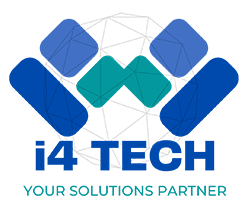Cloud Security Best Practices
Cloud Security Best Practices: Safeguarding Your Data in the Cloud
As businesses increasingly shift their operations to the cloud, ensuring the security of sensitive data and applications has never been more important. Cloud computing offers unparalleled flexibility, scalability, and cost-efficiency, but it also introduces new challenges when it comes to data protection and cybersecurity. Data breaches, cyberattacks, and unauthorized access can have devastating consequences for organizations, making it essential to implement strong cloud security practices.
In this blog post, we’ll explore the top cloud security best practices that every business should adopt to protect their data, ensure regulatory compliance, and safeguard their cloud environment.
1. Understand the Shared Responsibility Model
One of the first things any organization should do when adopting cloud services is to understand the shared responsibility model. This model defines the division of security responsibilities between the cloud provider and the customer.
- Cloud Providers: They are responsible for securing the cloud infrastructure, including physical security, network controls, and hardware.
- Cloud Customers: They are responsible for securing everything within the cloud, including data, access management, applications, and security configurations.
By understanding where the cloud provider’s responsibilities end and your own begin, you can more effectively implement the right security measures in your environment.
2. Implement Strong Identity and Access Management (IAM)
Identity and access management (IAM) is critical in preventing unauthorized access to your cloud systems. With proper IAM practices in place, you can ensure that only authorized users can access sensitive data and systems.
Best practices for IAM:
- Least Privilege: Grant users the minimum permissions required to perform their job. This reduces the risk of misuse or accidental data breaches.
- Multi-Factor Authentication (MFA): Always enable MFA for cloud-based accounts. MFA adds an extra layer of protection, requiring users to authenticate through multiple factors (e.g., password + smartphone authentication).
- Role-Based Access Control (RBAC): Assign permissions based on user roles, so that access to sensitive data is limited to only those who need it for their specific roles.
By carefully controlling who has access to what, you can reduce the risk of both external and internal threats.
3. Encrypt Data Both In-Transit and At-Rest
Data encryption is one of the most effective ways to ensure that your information remains secure, even if it’s intercepted during transmission or accessed by unauthorized users.
- In-Transit Encryption: Encrypt data while it is moving between your on-premises environment and the cloud, or between cloud environments. Use Transport Layer Security (TLS) protocols to ensure that sensitive data remains unreadable during transmission.
- At-Rest Encryption: Encrypt data stored in the cloud to protect it from unauthorized access, even if attackers gain access to cloud storage systems. Many cloud providers offer built-in encryption for data at rest.
Always ensure that both data in transit and data at rest are protected using strong encryption methods, such as AES-256.
4. Regularly Update and Patch Your Cloud Infrastructure
Cybercriminals often exploit known vulnerabilities in software, so keeping your cloud environment up-to-date with the latest patches and updates is crucial.
- Cloud Provider Updates: Ensure that your cloud provider regularly applies updates to the underlying infrastructure. This includes both software and hardware updates.
- Customer Updates: As a cloud customer, you are also responsible for keeping the software applications and services running within the cloud environment up-to-date. Make sure you apply patches and security fixes to your applications, operating systems, and databases.
By ensuring that your systems are always patched, you can prevent attackers from exploiting unpatched vulnerabilities.
5. Monitor and Log All Activity
Effective monitoring and logging are essential for detecting and responding to security incidents in the cloud. Real-time monitoring helps you track who is accessing your data and systems and identify any unusual behavior that could signal a breach.
- Use Cloud Security Tools: Many cloud providers offer built-in monitoring tools, such as AWS CloudTrail or Microsoft Azure Monitor, which can help track user activity and changes to your cloud infrastructure.
- Centralized Logging: Collect logs from all cloud resources and store them in a centralized logging system. This helps you analyze activity and detect patterns, making it easier to identify potential security threats early.
By maintaining a robust monitoring and logging strategy, you’ll be able to respond quickly to any security incidents.
6. Backup Your Data Regularly
Data loss can occur due to a variety of reasons—whether it’s an accidental deletion, a cyberattack (like ransomware), or even a cloud provider failure. To mitigate the risk, it’s essential to regularly back up your critical data and ensure that you have an up-to-date copy available in case of an emergency.
- Automated Backups: Schedule automated backups for your cloud-based data. Many cloud providers offer automated backup options that can be set up to run at specified intervals.
- Offsite Backups: Consider keeping backups of your most sensitive data in a separate, secure environment to prevent data loss in case of a regional cloud outage.
By having an effective backup plan in place, you can minimize the impact of data loss and quickly recover from a disaster.
7. Conduct Regular Security Audits and Assessments
Security in the cloud is not a “set it and forget it” task. To ensure that your environment remains secure, conduct regular security audits and vulnerability assessments.
- Cloud Security Assessments: Regularly evaluate your cloud infrastructure and identify areas that need improvement. This might involve assessing encryption methods, IAM policies, and network configurations.
- Penetration Testing: Conduct regular penetration tests to identify weaknesses in your security posture that could be exploited by attackers.
- Compliance Audits: If your organization must adhere to regulatory frameworks (e.g., GDPR, HIPAA, PCI-DSS), perform periodic compliance audits to ensure your cloud environment remains in compliance.
These audits help you identify and mitigate risks before they become critical issues.
8. Use Cloud Security Posture Management (CSPM) Tools
Cloud Security Posture Management (CSPM) tools help you automate the process of monitoring your cloud environments for misconfigurations, compliance violations, and security risks. These tools continuously scan your cloud infrastructure and alert you to potential vulnerabilities, making it easier to address security issues before they turn into serious threats.
Some well-known CSPM tools include:
- Prisma Cloud (by Palo Alto Networks)
- CloudHealth (by VMware)
- Trend Micro Cloud One
Using these tools helps you maintain a secure posture in your cloud environment and ensures that security policies are adhered to across your cloud resources.
9. Implement Network Security Controls
Cloud environments are often connected to the internet, making them vulnerable to external attacks. To safeguard your data and systems, it’s crucial to implement strong network security controls in the cloud.
- Firewalls: Use firewalls to create security boundaries between your internal network and the internet. Cloud providers offer virtual firewalls that allow you to control inbound and outbound traffic.
- Virtual Private Network (VPN): A VPN can securely connect your on-premises network to the cloud, allowing encrypted communication between the two environments.
- Intrusion Detection and Prevention Systems (IDPS): Use IDPS to monitor your cloud network for signs of malicious activity and prevent unauthorized access.
By securing your network, you’ll reduce the attack surface and prevent unauthorized access to sensitive data.
Conclusion: Security is a Shared Responsibility
As organizations continue to migrate to the cloud, cloud security becomes increasingly important. While cloud providers offer robust security measures, businesses must also take ownership of securing their data and applications in the cloud. By following these cloud security best practices—including implementing strong IAM, encrypting data, monitoring activity, and conducting regular audits—you can significantly reduce the risks associated with cloud computing and safeguard your business from potential threats.
At Praise’N’Pam, we understand the importance of cloud security and are here to help you build a secure and compliant cloud environment. Whether you’re migrating to the cloud or optimizing your existing cloud infrastructure, our team of experts can provide the guidance and support you need to ensure that your data stays protected.


